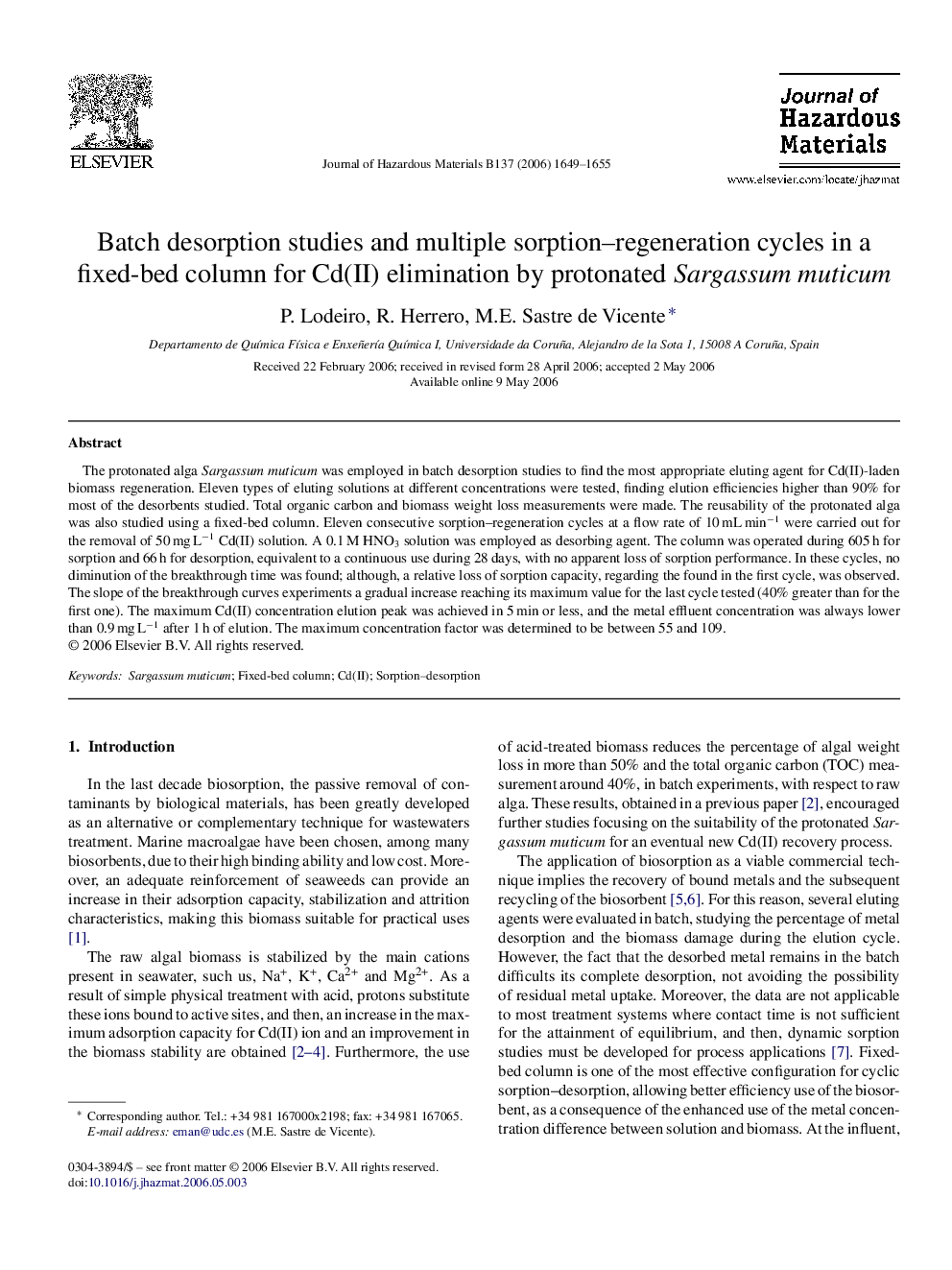| Article ID | Journal | Published Year | Pages | File Type |
|---|---|---|---|---|
| 585132 | Journal of Hazardous Materials | 2006 | 7 Pages |
Abstract
The protonated alga Sargassum muticum was employed in batch desorption studies to find the most appropriate eluting agent for Cd(II)-laden biomass regeneration. Eleven types of eluting solutions at different concentrations were tested, finding elution efficiencies higher than 90% for most of the desorbents studied. Total organic carbon and biomass weight loss measurements were made. The reusability of the protonated alga was also studied using a fixed-bed column. Eleven consecutive sorption-regeneration cycles at a flow rate of 10 mL minâ1 were carried out for the removal of 50 mg Lâ1 Cd(II) solution. A 0.1 M HNO3 solution was employed as desorbing agent. The column was operated during 605 h for sorption and 66 h for desorption, equivalent to a continuous use during 28 days, with no apparent loss of sorption performance. In these cycles, no diminution of the breakthrough time was found; although, a relative loss of sorption capacity, regarding the found in the first cycle, was observed. The slope of the breakthrough curves experiments a gradual increase reaching its maximum value for the last cycle tested (40% greater than for the first one). The maximum Cd(II) concentration elution peak was achieved in 5 min or less, and the metal effluent concentration was always lower than 0.9 mg Lâ1 after 1 h of elution. The maximum concentration factor was determined to be between 55 and 109.
Related Topics
Physical Sciences and Engineering
Chemical Engineering
Chemical Health and Safety
Authors
P. Lodeiro, R. Herrero, M.E. Sastre de Vicente,
